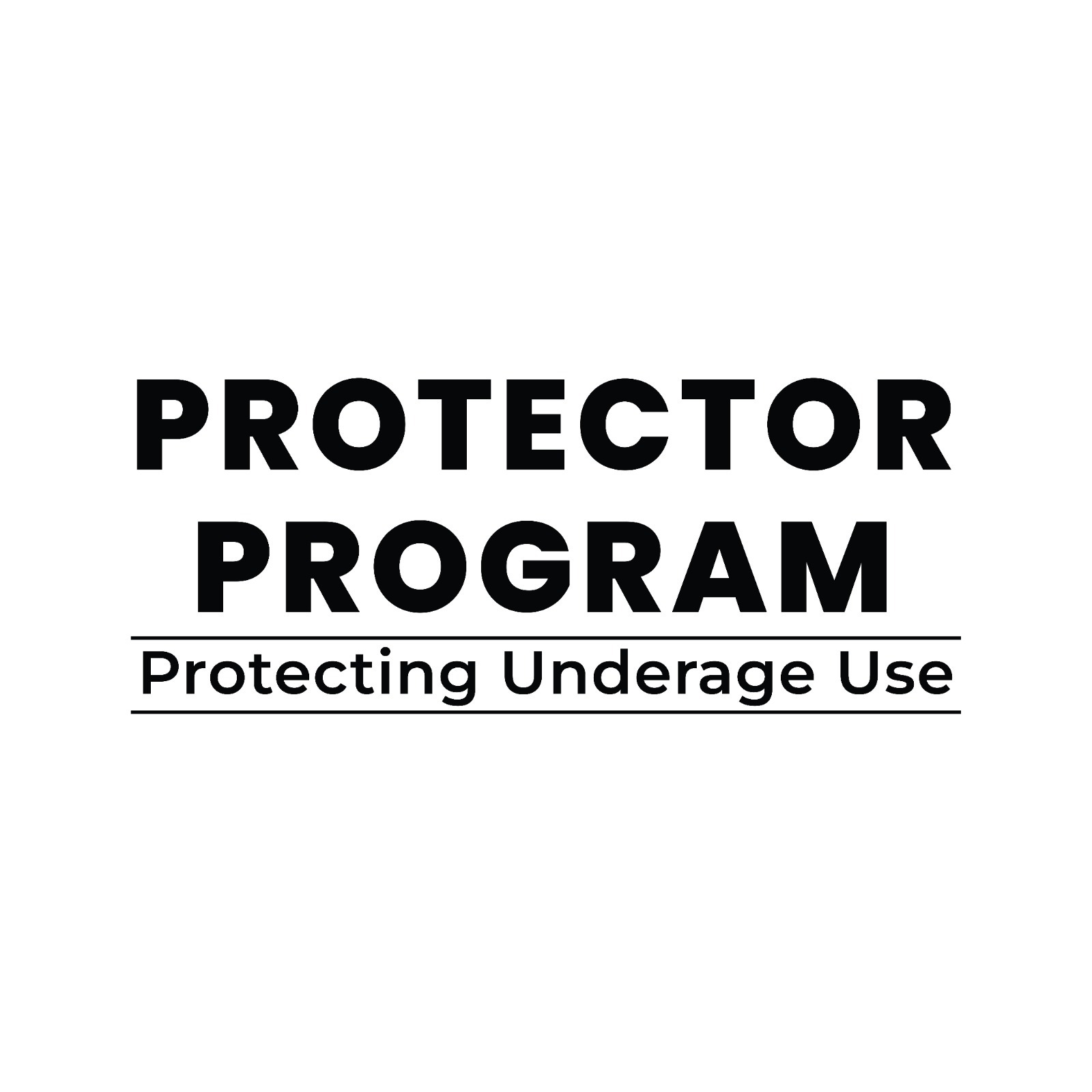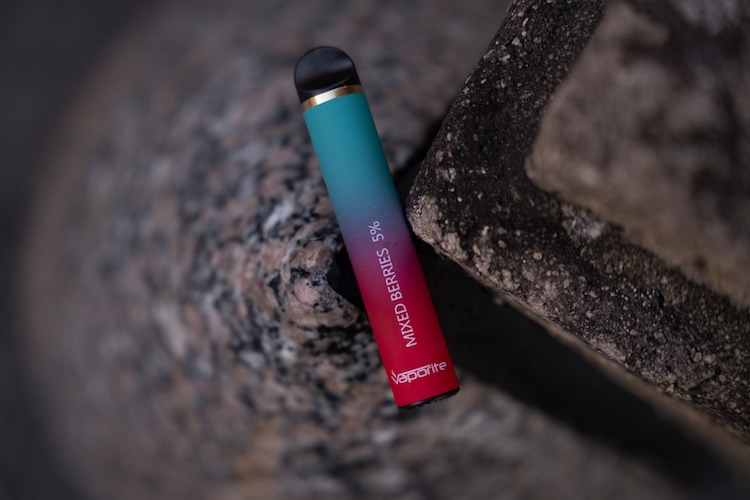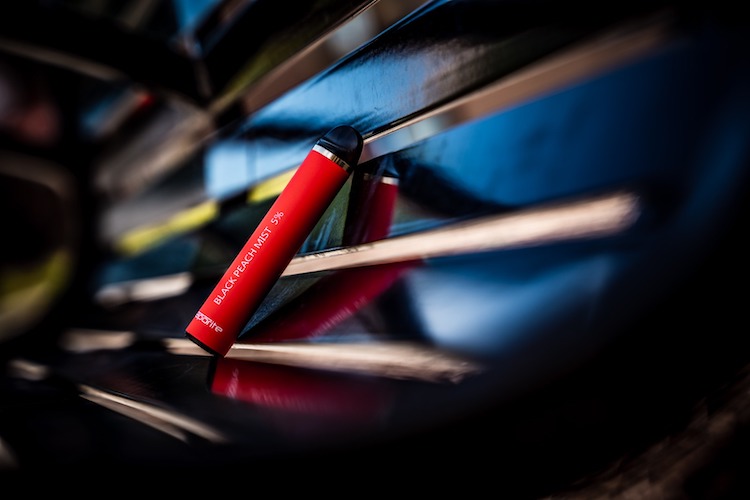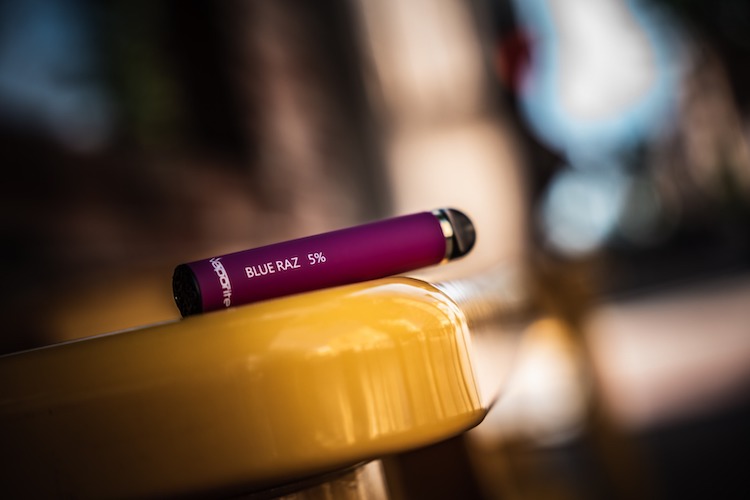Age Gate


TO USE THIS WEBSITE YOU MUST BE AGED 18 OR OVER
Please verify your age before entering the site*
*18+ only. This product contains nicotine and is addictive.
For adult nicotine or tobacco consumers only.


You must be over 18 to use this website, you will now be redirected to Google
GENERAL
Vaping is the act of inhaling and exhaling vapor produced by an electronic device called an e-cigarette or vape pen. The term "vaping" is derived from "vapor," as these devices do not produce smoke like traditional cigarettes; instead, they create an aerosol or vapor.
Here are the basic components and processes involved in vaping:
E-cigarette or Vape Device:This is the handheld device used for vaping. It typically consists of a battery, a heating element (atomizer or coil), and a reservoir or tank to hold the e-liquid (also known as vape juice).
E-Liquid (Vape Juice):E-liquid is a mixture of various ingredients, including propylene glycol (PG), vegetable glycerin (VG), nicotine (optional), and flavorings. PG and VG are commonly used as base liquids, and they help create the vapor when heated. Nicotine is an optional component, and users can choose different nicotine concentrations or opt for nicotine-free e-liquids. Flavorings give e-liquids their various flavors, which can range from traditional tobacco to a wide array of fruity, dessert, and beverage flavors.
Heating Element (Atomizer/Coil): The heating element in the vape device is responsible for heating the e-liquid and turning it into vapor. When the user activates the device (usually by pressing a button or inhaling), the coil heats up, causing the e-liquid to vaporize.
Battery: Vape devices are powered by rechargeable batteries. The battery provides the necessary energy to heat the coil and vaporize the e-liquid. Battery capacity varies between devices, affecting how long a user can vape before needing to recharge or replace the battery.
Inhalation: Users inhale the vapor created by the heating element. The act of inhaling and exhaling the vapor mimics the experience of smoking traditional cigarettes.
Exhalation: Users exhale the vapor produced during inhalation. The vapor quickly dissipates into the air and does not leave behind the lingering odor associated with traditional cigarette smoke.
Vaping was initially marketed as a potentially less harmful alternative to smoking, as it doesn't involve burning tobacco, which releases numerous harmful chemicals and carcinogens. However, the long-term health effects of vaping are still being studied, and there are concerns about its safety, particularly among young people who have taken up vaping. Additionally, some e-liquids may contain harmful substances, and the quality of vaping devices can vary.
It's essential to be aware of the potential risks and regulations associated with vaping, as well as to make informed choices if you are considering using these devices.
Vaping and smoking are two different methods of consuming nicotine and other substances. Here's a comparative analysis of the key differences between vaping and smoking:
Inhalation Method:
Smoking:In smoking, combustion occurs, and tobacco is burned, producing smoke. This smoke contains harmful tar, carcinogens, and thousands of chemicals, many of which are toxic and carcinogenic.
Vaping:Vaping involves heating e-liquid to produce vapor. It does not involve combustion, so there is no burning of tobacco or the production of smoke. Vapor primarily contains nicotine (if included in the e-liquid), propylene glycol (PG), vegetable glycerin (VG), and flavorings.
Nicotine Delivery:
Smoking:Cigarettes deliver nicotine rapidly to the bloodstream, resulting in a quick and intense nicotine "rush."
Vaping:E-cigarettes can deliver nicotine, but the rate of nicotine absorption is generally slower and less intense compared to smoking. Users can choose different nicotine concentrations in e-liquids to control their intake.
Chemical Composition:
Smoking:Cigarette smoke contains a complex mixture of harmful chemicals, including tar, carbon monoxide, formaldehyde, and numerous carcinogens.
Vaping:E-liquids typically contain nicotine, PG, VG, and flavorings. While vaping is generally considered less harmful than smoking due to the absence of combustion, some concerns exist about the safety of certain e-liquid ingredients and potential health risks associated with long-term vaping.
Secondhand Exposure:
Smoking:Secondhand smoke from traditional cigarettes is well-documented to be harmful and contains many toxic substances. It poses health risks to non-smokers exposed to it.
Vaping: Secondhand vapor from e-cigarettes is generally considered less harmful than secondhand smoke. However, it can still contain some potentially harmful chemicals, and the long-term effects of exposure are not fully understood.
Odor and Residue:
Smoking: Smoking leaves a strong and persistent odor on clothing, hair, and in indoor spaces. It also leaves behind yellowish stains and residue.
Vaping:Vaping produces a less pungent odor, and the vapor dissipates quickly. It does not leave behind the same type of stains or residue as smoking.
Health Risks:
Smoking: Smoking is a well-established cause of numerous health issues, including lung cancer, heart disease, respiratory diseases, and more. It is a leading preventable cause of death worldwide.
Vaping: While vaping is generally considered less harmful than smoking, it is not risk-free. Long-term health effects are still being studied, and there have been cases of vaping-related lung injuries and other health concerns, particularly among those using black-market or unregulated products.
Regulation:
Smoking: Tobacco smoking is heavily regulated in many countries, with restrictions on advertising, sales to minors, and public smoking.
Vaping: Regulations on vaping vary by country and region. Some places have strict regulations, while others have more permissive policies. The regulatory landscape is evolving as more research is conducted.
In summary, vaping is often considered a less harmful alternative to smoking due to the absence of combustion and reduced exposure to many harmful chemicals found in cigarette smoke. However, it is not without its own set of potential health risks, and the long-term effects are still being studied. Quitting smoking altogether remains the best choice for overall health and well-being, but for those unable to quit, switching to vaping may be a harm reduction strategy. It's essential to stay informed about the latest research and regulations regarding both vaping and smoking.
If you choose to vape, it's crucial to prioritize safety and responsible use. Here are some tips to help you engage in responsible vaping:
Understand the Risks: Be aware of the potential health risks associated with vaping. While it's generally considered less harmful than smoking, vaping is not risk-free, and long-term effects are still being studied.
Choose High-Quality Products: Purchase vaping devices and e-liquids from reputable sources. Avoid unregulated or black-market products, as they may pose health risks due to inconsistent quality and ingredients.
Read Labels: Carefully read the labels and packaging of e-liquids to understand the ingredients and nicotine concentration. Make informed choices based on your preferences and nicotine tolerance.
Start with Lower Nicotine Levels: If you are new to vaping or trying to quit smoking, start with e-liquids that have lower nicotine concentrations. You can gradually adjust the nicotine level as needed.
Keep E-Liquids Out of Reach: Store e-liquids in child-resistant containers and keep them out of the reach of children and pets. Nicotine can be toxic if ingested or absorbed through the skin.
Charge Batteries Safely: Follow the manufacturer's instructions for charging your vaping device's battery. Avoid overcharging, and use the charger provided with your device or a reputable third-party charger.
Maintain Your Device: Clean and maintain your vaping device regularly to ensure it functions correctly. Replace coils and other parts as needed to prevent overheating and potential hazards.
Avoid Mixing Substances: Do not mix e-liquids with other substances or additives that are not intended for vaping. Stick to the manufacturer's recommendations.
Vape Responsibly in Public: Respect local laws and regulations regarding vaping in public places. In some areas, vaping is prohibited indoors and in certain outdoor spaces.
Be Mindful of Secondhand Vapor: Be considerate of others and avoid vaping around non-vapers, especially in enclosed spaces where secondhand exposure may be a concern.
Know the Signs of Overuse: Be aware of the signs of nicotine overuse or dependence, such as dizziness, nausea, and increased heart rate. If you experience these symptoms, consider reducing your nicotine intake or seeking support to quit vaping.
Educate Yourself: Stay informed about the latest research and developments in the vaping industry. Understanding the potential risks and benefits can help you make informed decisions.
Consider Quitting: If you are using vaping as a smoking cessation tool, set a plan to gradually reduce nicotine intake and eventually quit vaping altogether. Seek support from healthcare professionals or smoking cessation programs if needed.
Remember that responsible vaping involves making informed choices, using your device safely, and being considerate of others. If you have any concerns about your vaping habits or experience any adverse effects, consult with a healthcare professional for guidance and support.
The legality of vaping varies by country, state, or region. Here are some general points about vaping's legal status in various parts of the world.
United States: • The federal minimum age for purchasing e-cigarettes and e-liquids is 21. • The FDA regulates e-cigarettes and vaping products. • Some states and localities have banned flavored e-liquids or have additional regulations. • Vaping in public places, like indoors or in certain outdoor areas, may be restricted based on state or local laws.
European Union: • Many EU countries follow the Tobacco Products Directive (TPD), which sets rules on nicotine content, packaging, and advertising.• The legal age for purchasing varies by country but is typically 18 or older. • Some EU countries have additional regulations or bans in place.
Australia: • The sale of nicotine e-liquids is prohibited without a prescription, though regulations can differ between states and territories.• Devices without nicotine can generally be sold.
Canada: • Vaping products with or without nicotine are legal for adults (usually 18 or 19, depending on the province). • There are restrictions on advertising, labeling, and packaging.
India: • In 2019, the government of India announced a complete ban on e-cigarettes, citing health concerns.
Brazil: • In Some nations, like Brazil, Singapore, and Uruguay, have completely banned e-cigarettes. • Others may regulate e-cigarettes similarly to tobacco products, or they might have specific vaping laws.
It's important to check local regulations and guidelines if you're considering vaping or traveling with vaping equipment. Laws can change over time, and regional or local regulations might impose additional restrictions.
Choosing the right vape device depends on your preferences, desired experience, and vaping needs. Here are some steps and considerations to help you select the right device:
Determine Your Vaping Purpose: • Quitting Smoking: If you're transitioning from smoking, you might want a device that provides a similar experience. Pod systems or simpler starter kits can be effective. • Cloud Production: If you're interested in producing large clouds, look for devices with high wattage capabilities and sub-ohm tanks. • Flavor: For the best flavor experience, you might consider advanced atomizers or rebuildable tanks.
Consider the Device Type: • Cig-a-Likes: These resemble traditional cigarettes and are usually disposable. • Vape Pens: Larger than cig-a-likes, they have a refillable tank and a rechargeable battery. • Pod Systems: Compact devices with replaceable pods filled with e-liquid. They're convenient and easy to use. • Box Mods: These are larger devices with more features, including adjustable power settings. They're suitable for those looking to customize their vaping experience. • Mechanical Mods: For experienced users only, they lack safety features and require knowledge about battery safety and Ohm's law.
Battery Life: • If you vape frequently, consider a device with a large battery capacity or one with replaceable batteries so you can always have a spare.
E-Liquid Compatibility: • Some devices work best with higher VG (vegetable glycerin) ratios, while others are suited for higher PG (propylene glycol) ratios. Make sure your device matches the type of e-liquid you want to use.
Maintenance and Customization: • Devices vary in the amount of maintenance they require. Pod systems and vape pens usually need less maintenance than more complicated devices. • If you enjoy tinkering, you might prefer a device that allows for customization, such as rebuildable atomizers.
Safety Features: • Look for devices with safety features like short-circuit protection, overcharge protection, and automatic shutoff.
Budget: • Vaping devices come in various price ranges. Determine your budget and find a device that offers the best value for your money.
Read Reviews: • Reviews from other vapers can provide insights into the reliability, performance, and overall satisfaction with a particular device.
Visit a Local Vape Shop: • Staff at vape shops can offer personalized advice and let you handle devices to get a feel for them.
Start Simple: • If you're new to vaping, you might start with a simpler device and then upgrade as you become more familiar with vaping.
The legal age to purchase vape products varies by country and sometimes even within regions or states of a country. Here's a general overview:
• United States: The federal minimum age to purchase tobacco and vape products is 21. This was raised from 18 to 21 in December 2019• European Union: The age limit is typically 18 in most EU countries, but individual member states may have their own regulations. Always check the specific regulations of each country. • Canada: The legal age varies by province but is usually 18 or 19. • Australia: The age limit is 18, though the sale of nicotine-containing e-liquids is restricted in some states and territories. • United Kingdom: The minimum age to purchase vape products is 18. • Asia: The age limit and regulations vary widely. In countries like Japan, South Korea, and the Philippines, the age is typically 20, 19, and 18, respectively. However, in places like India, the sale of e-cigarettes is banned altogether. • Other Countries: Age limits and regulations vary. Some countries have complete bans on e-cigarettes, while others might regulate them similarly to tobacco products.
Always consult local regulations if you're unsure. Additionally, even if legal, some retailers or online platforms might have their own age verification processes in place to ensure compliance with the law.
Product-Specific Questions
VG (Vegetable Glycerin) and PG (Propylene Glycol) are the two primary base ingredients in e-liquids used for vaping. They serve as carriers for the nicotine and flavorings in the liquid. Here's a breakdown of their differences:
Vegetable Glycerin (VG): • Source: VG is a natural chemical derived from vegetable oils. • Consistency: It's thicker than PG, which can affect how it wicks in some vaporizer tanks. • Vapor Production: VG produces more vapor than PG, so high-VG liquids are preferred by those looking for bigger vapor clouds. • Throat Hit: VG provides a smoother sensation on the throat compared to PG. • Sweetness: VG has a slightly sweet taste on its own, which can subtly influence the flavor profile of the e-liquid. • Allergies: Allergic reactions to VG are rare but can occur.
Propylene Glycol (PG): • Source: PG is a synthetic organic compound. It has been deemed safe for ingestion by health organizations and is used in various food and medical products. • Consistency: It's thinner than VG. Because of its consistency, it tends to be better at carrying flavor and provides a stronger throat hit, which can mimic the sensation of smoking. • Vapor Production: PG produces less vapor than VG. • Throat Hit: PG can offer a sharper throat hit, which some vapers prefer for its similarity to the sensation of traditional smoking. • Allergies: Some people are allergic or sensitive to PG, experiencing symptoms like skin rashes or throat irritation. It's less common, but if you experience such symptoms, it's advisable to switch to a higher VG ratio e-liquid.
Many e-liquids on the market use a combination of both VG and PG. The ratio can vary, with common mixes being 70/30 (VG/PG), 50/50, 80/20, etc. The desired ratio often depends on personal preference and the type of device being used. For example, high-PG e-liquids might be better suited for low-powered devices or pod systems due to their thinner consistency, while high-VG e-liquids can be ideal for high-powered devices or sub-ohm tanks that can handle thicker liquids and produce large vapor clouds.
Yes, we do offer nicotine-free options for many of our e-liquids. These variants contain all the flavor and quality of our regular e-liquids but without the nicotine content. When browsing our product selection, look for e-liquids labeled as "0mg" or "Nicotine-Free." If you have any further questions or need assistance finding nicotine-free options, please reach out to our customer service team.
We understand the importance of providing our customers with genuine and high-quality products. To ensure authenticity:
• Direct Partnerships: We source our products directly from reputable manufacturers. This direct relationship guarantees that you're receiving an authentic product. • Verification Codes: Where applicable, our products come with unique verification codes that you can enter on the manufacturer's official website to confirm their authenticity. • Transparency: We are committed to transparency and are always available to address any concerns. If you have questions about the source of any product, please contact our customer service team for more information. • Guarantee: We stand by the authenticity of every product we sell. If you ever have doubts about a product purchased from us, please reach out immediately so we can assist you.
We value your trust and continuously strive to ensure that every item we sell is genuine and of the highest quality.
Absolutely! We believe in transparency and providing our customers with all the information they need. Here are the primary ingredients commonly found in our e-liquids:
• Propylene Glycol (PG): A base fluid commonly used in vaping liquids. It helps carry the flavor in the vapor. • Vegetable Glycerin (VG): Another base fluid used in e-liquids, VG produces a thicker, denser vapor compared to PG. • Flavorings: We use food-grade flavorings, which give our e-liquids their distinct tastes. The exact flavorings vary depending on the e-liquid variant. • Nicotine (optional): Some of our e-liquids contain nicotine, but we also offer nicotine-free options for those who prefer them. • Distilled Water: In certain formulations, a small amount of distilled water may be added for consistency .
Please note that specific ingredients might vary based on the flavor or brand. For detailed ingredient lists or if you have concerns about allergens, please check the product description on our website or contact our customer service team.
Order and Shipping
Placing an order on our website is simple and straightforward. Follow these steps to order your desired products:
• Browse & Select: Navigate through our product categories or use the search bar to find specific items. Once you've found a product you'd like to purchase, click on it to view more details. • Add to Cart: After selecting the product size, flavor, quantity, or any other available options, click the "Add to Cart" button. • Review Cart: Once you've added all the items you want to purchase to your cart, click on the shopping cart icon, usually located at the top right corner of the page. Here, you can review your selections, update quantities, or remove items. • Proceed to Checkout: After reviewing your cart, click the "Proceed to Checkout" or "Checkout" button. • Enter Details: You'll be prompted to enter your shipping address, billing address, and payment information. If you have an account with us, you can log in to auto-fill some of this information.• Select Shipping & Payment: Choose your preferred shipping method and payment option.• Review & Confirm: Before finalizing your order, you'll have a chance to review all details. Ensure everything is correct, especially your address and ordered items.• Place Order: Once satisfied with your selections, click the "Place Order" or "Confirm Order" button. You'll receive a confirmation email shortly with your order details.
If you encounter any issues or have questions during the ordering process, please reach out to our customer service team for assistance.
We aim to offer a variety of payment options to make your shopping experience seamless. Currently, we accept the following methods:
• Credit/Debit Cards: We accept most major cards, including Visa, MasterCard, American Express, and Discover
Please ensure that your chosen payment method is valid and has sufficient funds to cover the order total. If you face any challenges during the payment process or have further questions about our payment options, please contact our customer service team.
We strive to process and ship your order as quickly as possible. The estimated delivery time varies based on your chosen shipping method and your location:
• Standard Shipping: Typically, orders shipped using standard shipping are delivered within 5-7 business days .• Expedited Shipping: If you choose expedited shipping, you can expect your order to arrive in 2-3 business days.• Next-Day Shipping: For urgent deliveries, we offer a next-day shipping option, ensuring your order arrives the following business day if placed before our cutoff time (usually 2 PM).• International Shipping: Orders shipped outside of our primary country of operation may take 10-15 business days, depending on customs processes and local postal services.• All shipping times are estimates and can vary based on external factors like postal service delays, customs clearance, or inclement weather.• Once your order is shipped, you'll receive a tracking number via email, allowing you to monitor your package's progress.
If your order hasn't arrived within the estimated delivery window or if you have any concerns about the shipping status, please contact our customer service team for assistance.
Safety and Health
A balanced discussion on the current scientific understanding of vaping safety. Note: Always refer readers to medical professionals for health-related advice.
Tips for safely storing devices and e-liquids.
Pls ask advice from your Physician.



